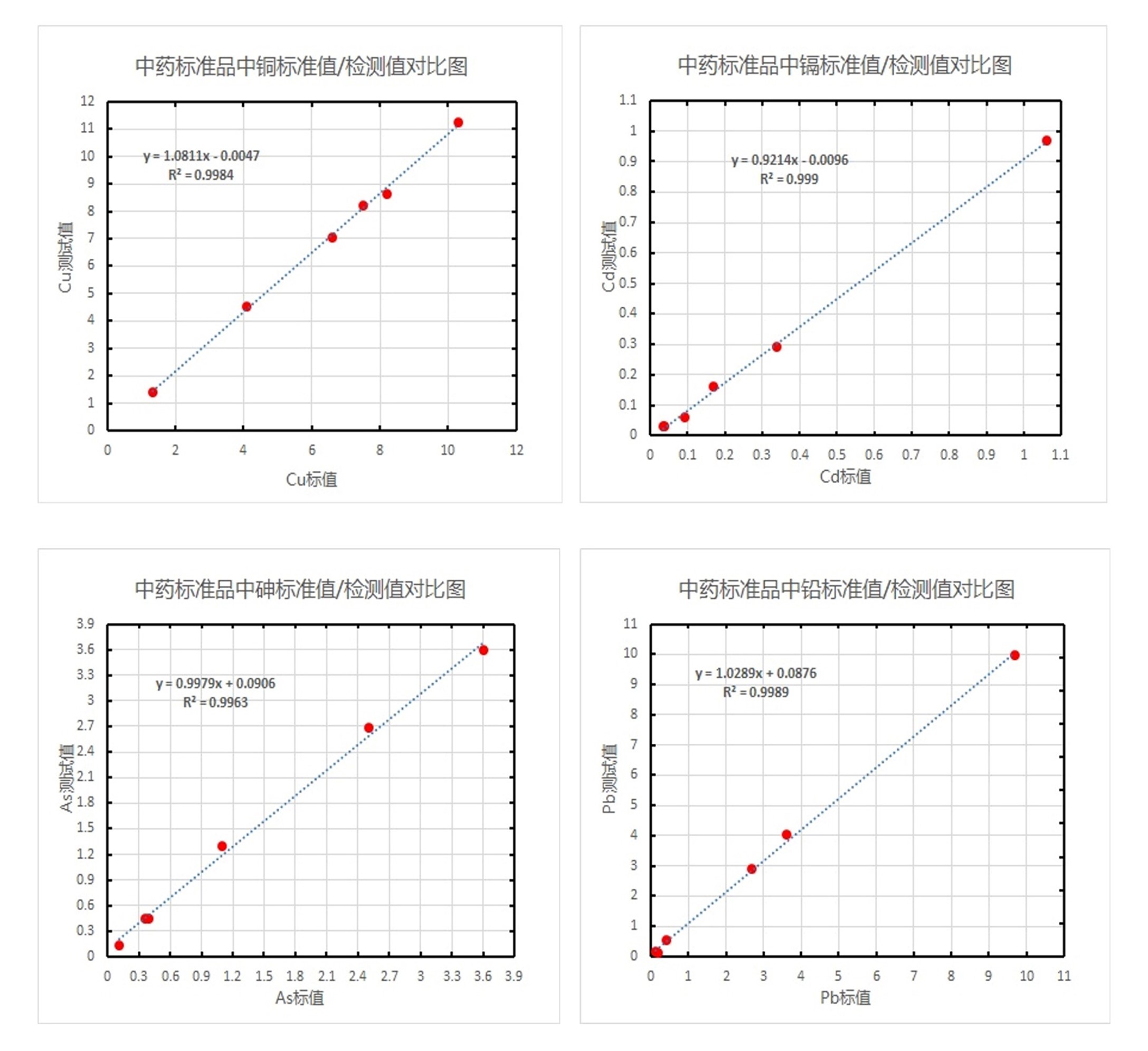
Application Overview
Chinese medicine is a treasure of our country, and its production areas are widely distributed in the north and south of China. With the industrialisation and urbanisation process in China, some of the farming land is contaminated by heavy metals, and the contaminated soil then migrates heavy metals into the plants, which becomes one of the reasons for the excessive heavy metals and quality risks in Chinese medicine.
The Chinese Pharmacopoeia requires limits for heavy metals such as lead, mercury, arsenic, copper and cadmium in traditional Chinese medicine, and the analytical methods specified are AA, ICP, ICP MS, etc. All these methods require sample digestion and laboratory analysis, which are complicated to operate and take a long time to analyse, making it difficult to cope with the demand for rapid or even on-site analysis.
The high sensitivity X-ray fluorescence spectrometer uses Monochromatic wavelengths focused excitation technology to reduce the detection limit of heavy metals to below 0.1mg/kg. Combined with the Fast FP method, which is an independent intellectual property right, it can eliminate the analysis error due to the difference of Chinese medicine matrix. The analytical method is characterised by short analysis time, high accuracy, non-destructive and simple sample handling, which is a favourable means to cope with the detection of heavy metals in TCM at all stages of TCM cultivation, acquisition, processing, quality control and quality inspection.
Detection limits
Table 1 Comparison of the limits of detection of heavy metals in Chinese medicines with the limits of detection of PHECDA-ECO
| Heavy metals |
Pb |
Cd |
Cu |
As |
Hg |
| Chinese Pharmacopoeia Minimum Limits |
5 |
0.3 |
20 |
2 |
0.2 |
| PHECDA Detection limit① |
0.07 |
0.05 |
0.1 |
0.06 |
0.2 |
Note ①: Chinese medicine matrix sample, elemental analysis time is 300 seconds.
Spectra

Figure 1 Schematic diagram of the spectra of the elements in citrus leaves and rice flour.
Table 2 Summary of elemental content values for standard samples
| Standard samples |
Mn |
Fe |
Cu |
Zn |
As |
Pb |
Br |
Rb |
Sr |
Cd |
| METAL-DJTZK-006 |
- |
- |
- |
- |
- |
- |
- |
- |
- |
0.663±0.051 |
| GBW10020 |
30.5±1.5 |
480±30 |
6.6±0.5 |
18±2 |
1.1±0.2 |
9.7±0.9 |
3.4±0.5 |
3.0±0.2 |
170±10 |
0.17±0.02 |
Note: GBW10020 is citrus leaf and METAL-DJTZK-006 is rice flour.
Accuracy
(1)Accuracy of standard samples

Note: National standard samples of prawns, Epimedium, celery, citrus leaves, carrots and scallops were used.
Table 3 Summary of ICP-MS and HS XRF results for Panax ginseng quality control samples
| Instrument model |
|
As |
|
Pb |
|
Cd |
| Standard values |
Measurement results/(mg/kg) |
Relative error |
Standard values |
Measurement results/(mg/kg) |
Relative error |
Standard values |
Measurement results/(mg/kg) |
Relative error |
| (%) |
(%) |
(%) |
| ICP-MS |
0.252 |
0.221 |
-12% |
0.57 |
0.67 |
18% |
0.67 |
0.728 |
8.7% |
| HS XRF |
0.236 |
-6% |
0.512 |
-10% |
0.633 |
-5.5% |
(2)Comparison with the Chinese Pharmacopoeia standard method (ICP-MS)

Note: The above chart contains a total of 99 different types of Chinese herbal medicines, the sources and ICP-MS determination results of each hazardous element were provided by Tianjin Customs Animal, Plant and Food Testing Centre.
Precision
Table 4 Harmful element levels in relation to relative standard deviations
| As |
Pb |
Cd |
| RSD/% |
Content/(mg/kg) |
RSD/% |
Content/(mg/kg) |
RSD/% |
Content/(mg/kg) |
| 5 |
0.72 |
5 |
1.32 |
5 |
0.62 |
| 10 |
0.36 |
10 |
0.64 |
10 |
0.31 |
| 20 |
0.18 |
20 |
0.31 |
20 |
0.15 |
| 30 |
0.12 |
30 |
0.20 |
30 |
0.10 |
| 1.8 |
2* |
1.4 |
5* |
10 |
0.3* |
Note: * Chinese Pharmacopoeia 2020 Edition Chinese herbal medicine heavy metal limit value requirements.
Features and advantages

Ultra-low detection limits
High sensitivity X-ray fluorescence spectrometer PHECDA series has a detection limit lower than that required by the Chinese Pharmacopoeia, meeting the requirements for quantitative analysis of heavy metals in Chinese medicine at the limit value.

Elimination of matrix differences
The Fast FP method automatically fits and deducts background signal differences due to matrix differences in Chinese medicines, reducing analytical errors.

Rapid analysis
Preparation of TCM samples in minutes, with a minimum of 6 minutes/sample for instrumental analysis.

Easy to operate
The instrument is simple to operate and no specialist is required to complete the analysis.

Portability
The small size and light weight of the pre-treatment equipment, PHECDA-ECO weighs 8.5Kg, making it easy to move around and complete on-site tests.
References and patents
[1] TANG Min, HAN Weidan, WANG Lijun, ZHAO Dan, XU Fanghui. Rapid comparison of the harmful element contents of Rhizome and fibrous roots of Cyperus rotundus by X-ray fluorescence spectrometry[J] Zhongnan Pharmacology,2021,19(08):1656-1660.
[2] Ling Gao, Donghua Di, Xiaojing Liu, and Fei Teng. Comparative Study on Heavy Metals Analysis in Mongolian Medicine Based on High Sensitivity X-ray Fluorescence Spectroscopy and ICP-MS. Spectroscopy 37(5) May 2022:(8).
[3] MA Xing, ZHANG Jing, CHAI Mingjun, XIAO Yabing, GAO Jianhui, TENG Fei. A fluorescence spectroscopy heavy metal detection device and detection method for Chinese herbal medicines. Patent No.:ZL 2021 1 1471681.6
Original statement:
This article is the original work of ancoren company except for the quotation. If it is forwarded and quoted, the source must be indicated, otherwise it may involve infringement. For more detailed technical information, please consult the staff of Ancoren.









